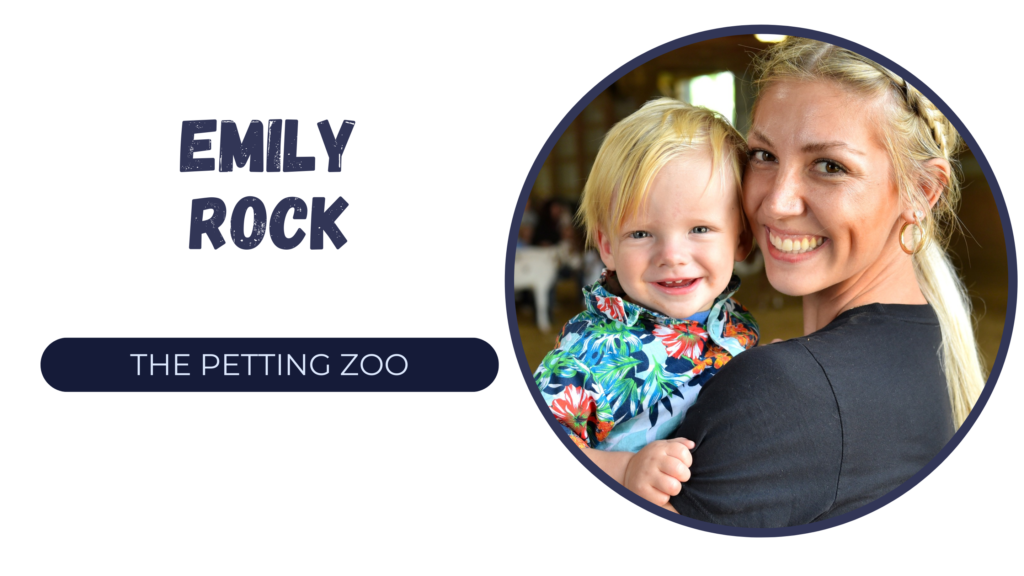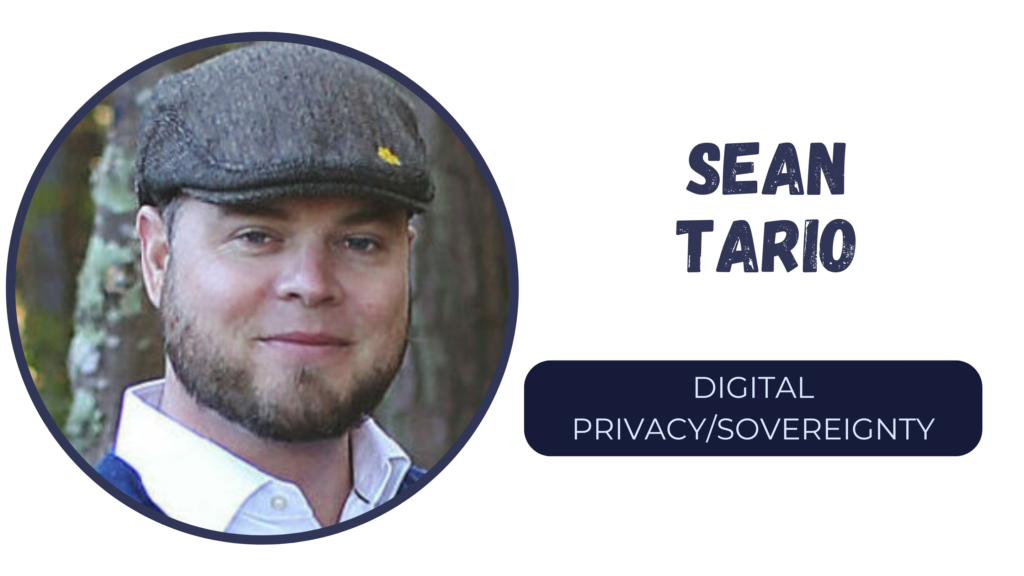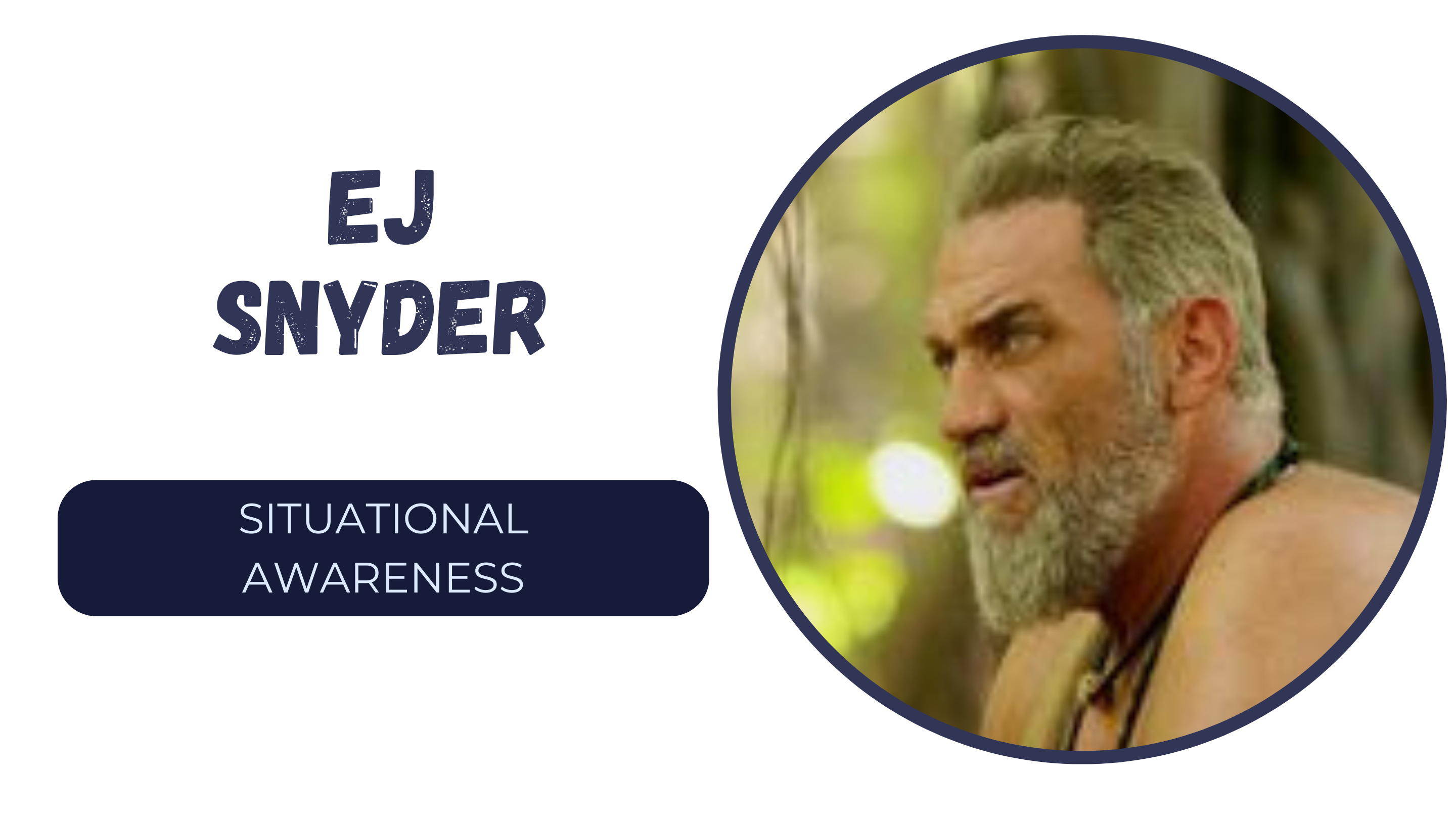Chuck Peoples- Building a Home Medical Bag

Chuck is the owner/operator of Homestead Medical. A medical training and supply company focusing on training all who want to be more prepared medically.
Chuck has been involved in EMS and Emergency Response as a critical care paramedic and firefighter for over 28 years. Having encompassed a career consisting of working in urban traditional EMS from care provider, supervisor and Education Director, to disaster recovery and rescue as well as working as a contractor/advisor/trainer around the world. Chuck has been involved in medical education for over 20 years teaching EMS, fire/rescue, military, law enforcement and civilians many aspects of medical care. Topics ranging from trauma, medical, austere, wilderness, critical care and prolonged care. With opening of Homestead Medical, Chuck is focusing on preparing and training with individuals and groups who want to be more prepared medically under any situation and confident in doing so. Homestead Medical has a more practical than tactical approach with medical education as well as delivering tactical trauma courses.
Emergency Communications Workshop

S & B Homestead Radios promotes communication and preparedness for the family homestead. Susan and Brian are amateur radio operators who love to help families and individuals interested in learning more about amateur radios, family communications, and preparedness for the homestead. They are both licensed operators, Susan KG5VEP and Brian KG5VEK. Susan is a retired Special Education Teacher and is currently working as an Educational Consultant. Brian owns a specialty construction company in North Mississippi. Brian is the Southeast Regional Coordinator for the American Contingency Ham Radio Network, AHRN. He also enjoys building and experimenting with antennas for ham radio. Susan and Brian are founding members of the amateur radio club Area 51 Radio.
Group Mississippi. We are also licensed Volunteered Examiners for ARRL.
Emergency Communications Workshop:
When: August 24, 2024
Time: 8:30 am – 4:00 pm
Location: 10830 S. Morgantown Rd, Woodburn, KY 42170
Price: $275 per person
Class taught by: S&B Homestead RadiosWhen the cell phones don’t work and I have a radio, how can I use it to communicate
with my family?
This is a hands-on workshop designed to get you up and running with your radio in an
emergency or tactical environment.
Topics covered:
- What are your radio needs? UHF / VHF / HF
- What is a PACE plan and how to develop a family/group PACE plan for communications?
- What is a SNAP report and how to use it.
- What frequencies should I have in my handheld radio? How to program the radio with the needed frequencies. What is a repeater? What is simplex?
- How to talk on the radio. Proper radio etiquette.
- How far will my handheld radio talk? Field exercise
- Antenna selections / Field exercise
- HF NVIS Field exercise/demonstration
Space is limited. Register early.
For additional information email sbradios@prontonmail.com
Emily Rock- Providing The Petting Zoo

Emily grew up on a homestead and was involved in showing cattle and other agriculture activities through 4-H and FFA. With her husband, Kelcey, and two children (Ridge and Michael) she lives on 100 acres in Alvaton, KY where they raise Jersey cattle, Hereford cattle, kune kune pigs, chickens, ducks, and rabbits.
Emily’s passion in life is to share her experiences of growing up on a farm with others. She is also an advocate for raw milk and sells raw milk and other dairy products through her herd-share program.
Leslie Gossett- herbalist, naturalist, forager, and educator

Leslie Gossett is an herbalist, naturalist, forager, and educator. Her mission is to support people in finding their way back to the wisdom of our ancestors. She started the School of Earth and Awe to teach people how to recognize that natural food and medicine are abundantly available all around us. She offers classes, workshops, and consultations. You can find her teaching schedule at www.schoolofearthandawe.com/events
Sean Tario- protect and defend our digital sovereignty.

Sean Tario has spent his entire professional career developing strategic alliances within business and economic development roles. Sean is a doer who is fighting for a future that emphasizes our need to build local, decentralized and open source systems. His current companies, Open Spectrum Inc. and MARK37.COM, provide tools for individuals and companies looking to escape Big Tech by leveraging Free and Open Source Software, devices and systems operated by like-minded God-fearing Patriots who are fighting to protect and defend our digital sovereignty and ability to exist online without censorship.
The Beginner’s Guide to Trapping

Today, we’ll unveil the secrets to trapping, a skill that not only connects you with nature but also helps in protecting farm animals and maintaining ecosystem balance.
We know diving into trapping can be overwhelming, especially if you’re new to the game. From choosing the right traps to understanding the behavior of different animals, there’s a lot to take in.
But don’t worry! This guide will walk you through the essentials of trapping, offering actionable steps, real-life examples, and valuable insights from experts like Bluegrass Trapper. Ready to embark on this exciting journey? Let’s dive in!
Understanding the Purpose of Trapping
- Why Trap? Trapping helps in controlling overpopulated prey animals, protecting farm animals, and maintaining ecological balance.
- Real-Life Example: Bluegrass Trapper, a seasoned expert, has been trapping since childhood to help prey and farm animals.
Tools and Equipment
- Choosing the Right Traps: Learn about Duke 550 traps for coyotes, dirt hole sets for raccoons, and dog-proof traps.
- Humane Practices: Ensure the use of laminated or cast jaws and check traps regularly.
- Tip: If a cat is caught accidentally, it can be released unharmed.
Finding the Perfect Trapping Location
- Identifying Signs: Look for tracks, trails, water sources, and visually appealing areas.
- Understanding Prey Behavior: Know how bobcats, coyotes, and raccoons behave to set traps effectively.
- Real-Life Example: The speaker’s encounters with bobcats and coyotes provide insights into their hunting patterns.
Turning Trapping into a Business
- Selling and Tanning Hides: Explore the fur market, learn about tanning techniques, and find buyers like Rising Star Sports Works.
- Real-Life Example: The fluctuating prices of Bobcat hides and the speaker’s experience in selling them.
Trapping for Survival and Farm Protection
- Survival Tool: Traps can be set and left unattended, making them a reliable survival tool.
- Farm Protection: Deal with predators like hawks, owls, and raccoons that threaten farm animals.
- Real-Life Example: The speaker’s success in trapping 20 coyotes on one farm.
Engaging with the Trapping Community
- Festivals and Events: Attend events like the one in Bowling Green, Kentucky, to learn from experts.
- Real-Life Example: Bluegrass Trapper’s planned beginner-level information session at the festival.
With this guide, you’re now equipped to start your trapping journey with confidence. From selecting the right tools to understanding the business aspect, you’ve got the knowledge you need.
Remember, trapping is not just about catching animals; it’s a skill that connects you with nature, helps in survival, and contributes to ecological balance.
Excited to explore this fascinating world? Check out the trapping class with Bluegrass Trapper at the Kentucky Sustainable Living Festival 🦊🐾
Homestead Medicine: The Beginners Guide.
Understanding Homestead Medicine
The Skill and Knowledge Required
Homestead Medicine is not about replacing professional medical care but supplementing it, especially in remote or emergency situations. It requires a fundamental understanding of the human body, common ailments, and basic medical procedures.
- Anatomy and Physiology: Understanding the structure and function of the human body is essential. This knowledge helps in diagnosing and treating various conditions.
- First Aid Skills: Basic first aid skills, such as CPR and wound dressing, are foundational in Homestead Medicine.
- Continuous Learning: Medicine is an evolving field. Regularly updating skills and knowledge is vital.
Learning to Deal with the Body Without Access to Modern Facilities
In many remote or off-grid living situations, immediate access to modern medical facilities may not be available. Homestead Medicine emphasizes:
- Resourcefulness: Utilizing available resources effectively, such as using herbal remedies or creating homemade medical supplies.
- Adaptation: Adapting to the situation and improvising with what’s on hand can make a significant difference in medical emergencies.
- Prevention: Focusing on preventive measures, such as proper hygiene and nutrition, to minimize health risks.
The Importance of Patient Assessment
Patient assessment is the process of evaluating a person’s health, which is crucial in determining the appropriate care.
- Observation Skills: Careful observation of symptoms, behavior, and physical appearance can provide valuable insights into a person’s condition.
- Vital Signs: Understanding and monitoring vital signs like heart rate, blood pressure, and temperature are essential in assessing a patient’s state.
- Communication: Effective communication with the patient or family members can reveal important information about medical history and current symptoms.
Vital Signs and How to Evaluate Them Without Modern Tools
Evaluating vital signs without modern tools requires skill and practice:
- Heart Rate: Learning to take a pulse manually, either at the wrist or neck.
- Blood Pressure: Understanding how to use a manual blood pressure cuff.
- Temperature: Utilizing alternative methods to gauge body temperature, such as touch or specific thermometer types.
- Respiration: Observing and counting breaths to assess respiratory function.
Understanding Homestead Medicine is about embracing a holistic and resourceful approach to health and well-being. It’s about empowering individuals with the knowledge and skills to take care of themselves and their community, especially when professional medical help may not be immediately accessible.
By focusing on essential skills, resourcefulness, patient assessment, and vital signs, Homestead Medicine offers a practical and valuable complement to traditional medical care.
Long-term Wound Care and Trauma Management
How to Handle Wounds and Infections
Wounds and infections are common occurrences that may require immediate attention, especially in a homestead environment.
- Cleaning the Wound: Proper cleaning with soap and water or a saline solution is the first step in preventing infection.
- Assessing the Severity: Understanding the difference between a minor cut and a more serious wound that may require professional medical attention.
- Applying Dressings: Using sterile gauze or bandages to protect the wound and promote healing.
The Importance of Sterile Gauze and Proper Wound Care
Sterility is crucial in wound care to prevent infections.
- Using Sterile Materials: Always use sterile gauze, bandages, and tools when treating a wound.
- Changing Dressings Regularly: Regularly inspecting and changing dressings to ensure proper healing and prevent infection.
- Understanding Signs of Infection: Recognizing early signs of infection, such as redness, swelling, or warmth, and knowing when to seek professional help.
The Use of Tourniquets and Bleeding Control Kits
In more severe cases, controlling bleeding is vital.
- Applying a Tourniquet: Knowing how and when to apply a tourniquet can be life-saving in severe bleeding cases.
- Using Bleeding Control Kits: These kits contain specialized tools and materials for controlling significant bleeding.
- Training and Practice: Proper training and regular practice are essential for effectively using these tools.
Long-term wound care and trauma management in Homestead Medicine emphasize practical knowledge, proper hygiene, and the appropriate use of tools and techniques. From handling minor cuts to managing significant bleeding, the focus is on prevention, proper care, and understanding when professional medical intervention is needed.
Home Remedies and Herbal Solutions
Making Your Own Saline and Other Home Remedies
Creating basic solutions and remedies at home can be both practical and empowering.
- Saline Solution: A simple mixture of salt and boiled water used for cleaning wounds or as a nasal rinse.
- Basic Antiseptics: Utilizing household items like hydrogen peroxide or alcohol for cleaning minor wounds.
- Homemade Ointments: Combining natural ingredients like honey or aloe vera to create soothing ointments for burns or skin irritations.
Introduction to Herbal Medicine
Herbal medicine is an age-old practice that uses plants and natural substances to treat various ailments.
- Identifying Medicinal Plants: Learning to recognize and properly use plants with medicinal properties.
- Preparation Techniques: Understanding how to prepare herbal remedies, such as teas, tinctures, or salves.
- Safety Considerations: Recognizing potential allergies or interactions with other medications.
Utilizing Household Items for Medical Preps
Common household items can often be used for basic medical care.
- Baking Soda: Used for relieving insect bites or as a mild antacid.
- Apple Cider Vinegar: Known for its antibacterial properties and can be used as a skin toner or digestive aid.
- Olive Oil: Used as a base for ointments or as a gentle lubricant for earwax removal.
Home remedies and herbal solutions are integral parts of Homestead Medicine, offering accessible and often cost-effective alternatives to commercial products. From making saline solutions to utilizing common household items for medical purposes, these practices emphasize resourcefulness and self-reliance.
While these remedies can be highly beneficial, it’s essential to approach them with caution and awareness, recognizing when professional medical advice is needed. Proper education, understanding of individual needs, and adherence to safety guidelines are crucial in effectively implementing these practices.
Dental Emergencies and Skin Stapling
Handling Dental Emergencies Without Professional Help
Dental emergencies can be painful and distressing, and immediate professional help may not always be available.
- Temporary Fillings: Utilizing over-the-counter dental cement or clove oil to alleviate pain from a lost filling or broken tooth.
- Toothaches: Understanding basic remedies like cold compresses or saltwater rinses to ease discomfort.
- Recognizing Serious Issues: Knowing when a dental problem is beyond home treatment and requires professional care.
The Use of Skin Staplers for Wound Closure
Skin staplers are medical devices used to close wounds, and they can be a valuable addition to a homestead medical kit.
- When to Use Skin Staplers: Understanding the types of wounds that may benefit from stapling, such as clean and straight lacerations.
- Proper Technique: Learning the correct method of applying skin staples to ensure effective wound closure.
- Sterilization and Care: Ensuring that the stapler and wound area are properly sterilized to prevent infection.
The Importance of Cosmetic Considerations in Wound Care
While the primary goal of wound care is healing, considering the cosmetic appearance is also relevant.
- Minimizing Scarring: Utilizing techniques and products that can reduce visible scarring.
- Alignment and Care: Proper alignment and care of the wound edges can improve the cosmetic outcome.
- Long-term Monitoring: Keeping an eye on the healing process and recognizing if additional care or intervention is needed for optimal appearance.
Emergency Preparedness and Everyday Carry
The Importance of Carrying Medical Supplies Daily
Being prepared with essential medical supplies can make a significant difference in unexpected situations.
- Everyday Carry (EDC) Kits: Creating small, portable medical kits with essential items like band-aids, pain relievers, and antiseptics.
- Tailoring to Individual Needs: Customizing kits based on personal or family needs, such as specific medications or allergy treatments.
- Accessibility: Keeping kits in accessible locations like bags, cars, or workplaces.
Preparing for Grid-Down Situations and Natural Disasters
Preparedness for major emergencies requires planning and foresight.
- Emergency Medical Kits: Assembling comprehensive medical kits with supplies for wound care, hydration, sanitation, and more.
- Training and Education: Participating in training sessions or workshops on emergency medical response.
- Community Collaboration: Coordinating with neighbors or local community groups to enhance collective preparedness.
Teaching the Next Generation
Involving Children in Learning Medical Skills
Educating the younger generation on basic medical skills can be a valuable life lesson.
- Age-Appropriate Learning: Introducing children to simple first aid practices, such as applying a bandage or recognizing when to call for help.
- Hands-On Experience: Providing supervised opportunities for children to practice skills, fostering confidence and competence.
- Encouraging Curiosity: Answering questions and encouraging exploration of medical topics in a safe and supportive environment.
The Importance of Passing on Knowledge to the Younger Generation
The transmission of knowledge and skills to the next generation ensures continuity and community resilience.
- Family and Community Tradition: Embedding medical knowledge within family and community practices, creating a shared understanding.
- Mentorship and Guidance: Older family members or community experts guide the younger generation through learning experiences.
- Long-term Benefits: Equipping the next generation with skills that will serve them throughout their lives, enhancing self-reliance and community well-being.
Conclusion
The Real-World Applicability of Homestead Medicine
Homestead Medicine is not merely a set of techniques; it’s a philosophy that emphasizes self-reliance, community collaboration, and practical wisdom. Its applicability extends beyond remote or off-grid living to everyday situations and broader community contexts.
- Encouraging Self-Reliance: Fostering a sense of empowerment and independence through knowledge and skills.
- Continuous Learning: Emphasizing the importance of ongoing education, practice, and adaptation to new information and changing circumstances.
- The Value of Knowledge in Various Emergency Situations: Recognizing that the principles and practices of Homestead Medicine can be valuable in a wide range of scenarios, from minor injuries to significant emergencies.
Final Thoughts
Homestead Medicine represents a thoughtful and balanced approach to health and well-being. It aligns with the values of self-sufficiency, community engagement, and responsible stewardship of resources. From teaching the next generation to preparing for emergencies, the principles and practices outlined in this article provide a comprehensive overview of a subject that is both timeless and timely.
Whether for an individual, family, or community, Homestead Medicine offers practical insights and actionable strategies that can enhance the quality of life and resilience in various settings.
This article does not replace professional medical advice and emphasizes the importance of recognizing the limitations of home care and seeking professional assistance when needed.
Homesteading in Kentucky
How to Successfully Begin Homesteading in Kentucky
If you are looking to embark on a journey towards a more self-sufficient and sustainable lifestyle, homesteading in Kentucky might be the perfect fit for you. With its rich agricultural heritage and favorable conditions for farming, Kentucky offers a unique opportunity for individuals who want to embrace the rural lifestyle. This comprehensive guide will provide you with all the essential information on how to start homesteading in Kentucky.
Buying Farmland in Kentucky
One of the first steps in starting your homesteading journey is finding the right plot of land. Fortunately, Kentucky offers reasonably priced farmland, making it more accessible for aspiring homesteaders. According to the United States Department of Agriculture (USDA), Kentucky’s average cost of farmland is $4,350 per acre, slightly higher than the national average. This affordable price, combined with the state’s 12.9 million acres of farmland and 75,100 farms, makes Kentucky an attractive destination for those looking to establish their homestead.
When searching for farmland, it is crucial to consider factors such as soil quality, access to water sources, and proximity to livestock auctions and groups. Kentucky boasts fertile soil, particularly the Crider soil, which covers over 500,000 acres of the state. This nutrient-dense soil, moderate temperatures, and ample rainfall create ideal conditions for growing crops and raising animals.
The Kentucky Beginning Farmer Loan Program offers assistance to individuals with farming experience who wish to develop, expand, or buy a farming operation. This program provides financial support for purchasing livestock, equipment, agricultural facilities, real estate, or even securing working capital. Taking advantage of such programs can significantly facilitate your homesteading journey in Kentucky.
Growing Crops in Kentucky
Kentucky’s favorable climate, characterized by long and warm growing seasons, offers excellent opportunities for successful crop cultivation. The majority of the state falls within USDA Hardiness zones 6a to 7a, with zone 6b being the most common. This means that Kentucky experiences relatively mild winters and ample sunshine, allowing for a wide range of crops to thrive.
In Kentucky, popular crops that flourish include tomatoes, cucumbers, peppers, onions, garlic, rhubarb, corn, potatoes, and various types of squash. Additionally, Kentucky Wonder beans, a beloved local variety, have been cultivated by Kentucky farmers for centuries. When selecting crops for your homestead, prioritize those that can tolerate high temperatures and humidity, as these are prevalent during the warmer months in Kentucky.
Furthermore, it is worth noting that Kentucky’s official state soil, Crider soil, is renowned for its richness and fertility. This silt loam soil sits on a layer of reddish clay loam and limestone, providing excellent drainage and nutrient retention. Utilizing this prime farmland can significantly enhance your crop production and overall homesteading success.
Raising Animals in Kentucky
Kentucky offers a diverse range of opportunities for animal husbandry, allowing homesteaders to raise livestock in a manner that suits their goals and preferences. It is important to familiarize yourself with the regulations set forth by the Kentucky Department of Agriculture to ensure compliance and the well-being of your animals.
Livestock identification is mandatory for cattle, sheep, and goats being sold at Kentucky-approved livestock markets. Additionally, regulations regarding the feeding of swine and the importation of certain swine varieties are in place to prevent the spread of diseases. Each locality in Kentucky has specific regulations concerning chicken-keeping, so it is essential to check with your local authorities to determine the rules that apply to you.
Kentucky boasts numerous livestock auctions and sales throughout the year, providing opportunities for buying and selling animals. For example, the Washington County Livestock Center is known for its variety of livestock, while the Paris Stockyard conducts regular cattle, sheep, and goat sales. Keeping animals on your homestead requires responsible stewardship and adherence to Kentucky’s regulations to promote animal welfare and maintain the harmony of your community.
Selling Food in Kentucky
As a homesteader, you may want to share the fruits of your labor with others by selling your farm-fresh produce and homemade goods. Kentucky offers numerous farmers’ markets and direct-to-consumer marketing opportunities, allowing you to connect with local consumers and support the demand for locally grown, nutritious food.
While selling whole, fresh, uncut fruits and vegetables generally does not require a permit, certain regulations must be followed. Farmers’ markets may require vendors to purchase insurance, such as general liability and/or product liability insurance, to protect themselves and their customers. Additionally, proper labeling of food products is necessary, including listing ingredients, net weight or volume, processing dates, allergen information, and appropriate disclaimers.
Depending on the products you want to sell, different levels of registration may be required. Home-based processors, who make low-risk products like jams, fruit butter, and bread, must annually register with the Kentucky Cabinet for Health and Family Services/Food Safety Branch. On the other hand, home-based microprocessors, selling higher risk products such as canned tomatoes and pickled fruits and vegetables, must attend a workshop, submit recipes for approval, and pay an annual certification fee.
Homesteaders in Kentucky also have the opportunity to sell eggs. You can legally sell up to 60 dozen eggs per week directly to consumers without a license, as long as they are properly refrigerated during transport and labeled according to state guidelines.
Conclusion
Homesteading in Kentucky presents a world of possibilities for those seeking a more self-reliant and sustainable lifestyle. With its affordable farmland, favorable climate, and supportive programs, Kentucky offers a welcoming environment for aspiring homesteaders. By carefully considering factors such as land purchase, crop selection, animal husbandry, and food selling regulations, you can lay a solid foundation for a successful homesteading journey in the Bluegrass State. Embrace the spirit of self-sufficiency, connect with the local community, and cultivate a thriving homestead in the heart of Kentucky.
EJ Snyder – Extreme Survivalist, Adventurer, and 25 Year Retired Army Combat Veteran

EJ Snyder is an Extreme Survivalist, Adventurer, and 25 Year Retired Army Combat Veteran. He has been an Outdoorsman since he was 5 years old and formally teaching Survival Outdoors Skills and Preparedness for well over 30 years. He formally learned Survival Skills while serving in the Army and became a SERE Instructor. In the Army he was also a Drill Sergeant and Ranger Instructor. He is a Highly Decorated Warrior serving in Combat in both the 1991 Gulf War and OIF. He is most recently known for his Survival challenges on Discovery Channel as a 6 Time Legend of “Naked & Afraid”, Hosting “Dual Survival” and “Mountain Masters”, as well as “First Man Out”, and “Into The Wild Frontier” amongst many other programs. He is currently the #1 Ranked Survivalist in the World. EJ offers online and live training courses at his web site www.ejsnyder.com and you can follow him on Social Medias IG, X, TikTok @ejsnyder333, FB EJ Snyder, and YouTube Survive with EJ.
















